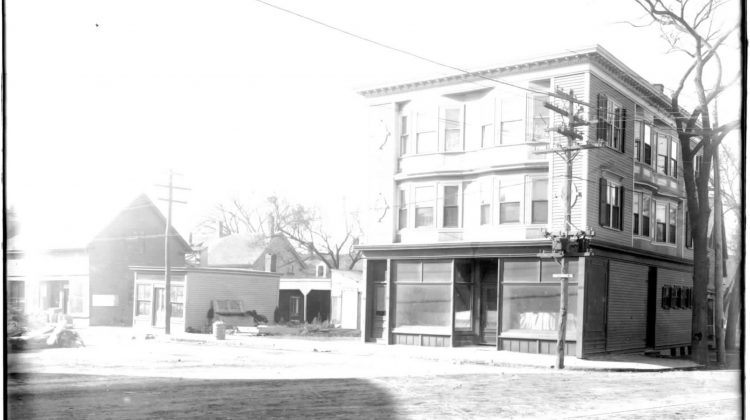LYNN — Long before the hum of traffic and the shadows of shoe factories marked the street, Boston Street was the artery through which Lynn’s earliest aspirations pulsed. Spanning centuries of stories — from colonial invention to revolutionary courage and 19th-century industrial might — Boston Street remains a foundational chapter in the city’s unfolding history.
Originally laid as part of the colonial highway between Salem and Boston, Boston Street once stretched the full six-mile breadth of Lynn before the town of Saugus separated in 1815. It was along this road that some of America’s earliest technological breakthroughs took place. In the mid-1600s, at the nearby Saugus Iron Works, ironworker Joseph Jenks helped forge a nation’s industrial future. Jenks was granted the first machine patent in colonial America in 1646 — a water-powered mill for blades and scythes — and is believed to have cast the first iron tools and cooking pots in the New World.
Jenks later created the dies for Boston’s first silver coins and designed what became the modern American scythe, patented in 1655. He even proposed a fire engine design to Boston’s selectmen in 1654 — a project that, though its construction remains uncertain, helped secure his place as one of the first inventors in American history. Archival records credit Jenks with early iron castings, and examples attributed to his work are reportedly preserved in local collections. Beyond tools, his introduction of patenting to the Massachusetts colony ushered in a new age of protected invention. His contributions laid the groundwork for Boston Street’s reputation as a birthplace of innovation.
The street also played a role in Lynn’s earliest brewing tradition. Edmund Ingalls established the first known malt house near Ingalls Pond on Fayette Street. According to local accounts, nearly every prominent man of the time maintained one.
Culture and spectacle found their place as well. In 1800, Boston Street hosted Lynn’s first exhibition of an elephant, displayed in a building owned by Col. James Robinson near the old post office. The exotic attraction drew curious crowds and signaled that Boston Street wasn’t just about commerce — it also embraced wonder.
During the Revolutionary War, the street took on strategic importance. Local residents like Charles and Daniel Allen Newhall, alongside their father Allen Newhall, ambushed retreating British soldiers after Concord, firing from behind stone walls. Their father’s knowledge from the French and Indian War reportedly saved them from capture by a British flank guard. The street’s patriots also included Col. Ezra Newhall, who fought at Valley Forge and hosted fellow revolutionaries in his home.
As Lynn transitioned from colonial settlement to bustling town, Boston Street evolved into a hub of commerce and community. In the 1790s, Lynn’s first post office was established in a building owned by Col. Robinson. Nearby, early shoemakers set up modest ten-foot workshops with firepits and cutting boards — the humble beginnings of an industry that would come to define the city.
By the early 1800s, Boston Street buzzed with tanneries, gristmills, chocolate mills, and what is believed to be the first paper-hanging factory in Essex County. Industrialist Benjamin Phillips, owner of Berry’s Mills, ran multiple enterprises — a fulling mill, bark mill, and two large tan-yards. In a gesture of community solidarity, he famously helped fellow tanner Samuel Mulliken start his own operation, refusing any compensation.
The street saw many other firsts: Lynn’s first social library in 1794, its first tailor’s shop, and even its first four-wheeled rock cart. Local color enriched the street’s lore as well. Lois Hart, a fiercely independent milk-seller who lived alone and sold her product by beer measure, once beat away a prankster dressed in an ox-hide costume, whom she mistook for the devil. Her garden and grit are still fondly remembered.
Boston Street’s cultural life ran equally deep. In 1800, Joseph Mansfield, born across from Marion Street, published “Hope,” the first known poem by a Lynn native. Around the same time, Edward Taylor — later famed as the sailor-preacher of Boston’s Seamen’s Bethel — began his early ministry preaching in homes along Boston Street. Civic life also found strong roots with the founding of Mount Carmel Lodge of Freemasons, chartered in 1805, which became a gathering place for Lynn’s early leaders.
Later, figures like Dr. James R. Newhall — a beloved local grocer, alderman, shoe agent, and historian — would emerge as chroniclers of Boston Street’s legacy. Known affectionately as “Dr. Jim” to distinguish him from several other James Newhalls in town, his wit and hospitality made him a fixture of Lynn’s civic life. Neighbors distinguished the many Newhalls with nicknames like “Silver Jim,” “Nathan’s Jim,” and others, creating what can only be described as colonial Lynn’s version of a sitcom ensemble.
Reflections of poetry and patriotism also echo from this street. In 1865, as Massachusetts veterans returned their regimental flags to the State House following the Civil War, J. Warren Newhall penned a poem honoring those “banners of sacred worth.” Later, poet Annie E. Johnson wrote of hearing the “Bells of Lynn” ring across the bay, recalling both the joys of childhood and the heartbreak of national loss.
Boston Street stands as a thread through Lynn’s history — a place where industry, invention, revolution, and community took root and grew side by side.

